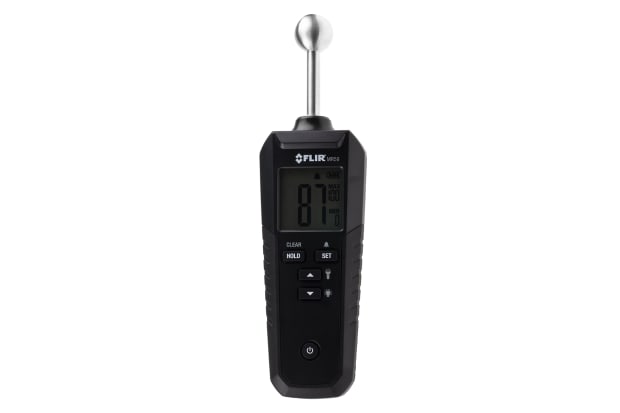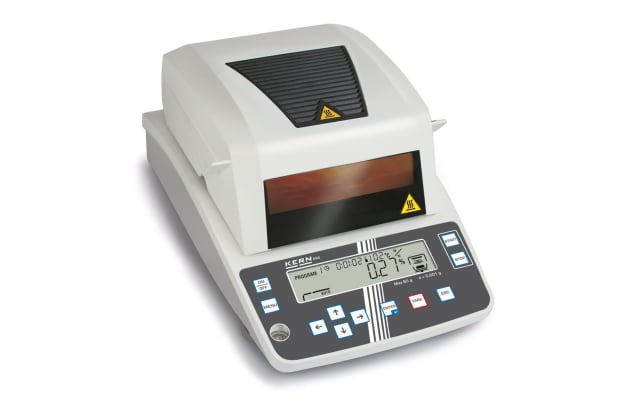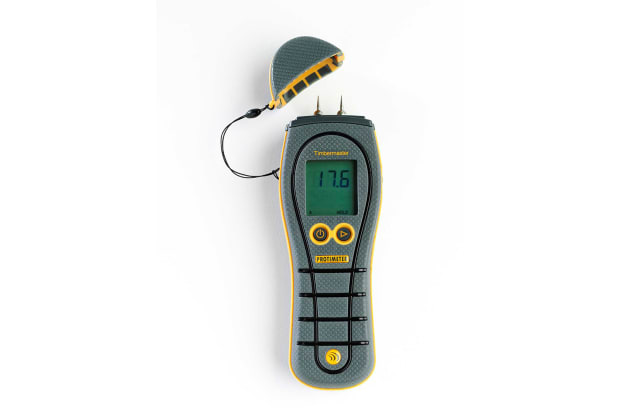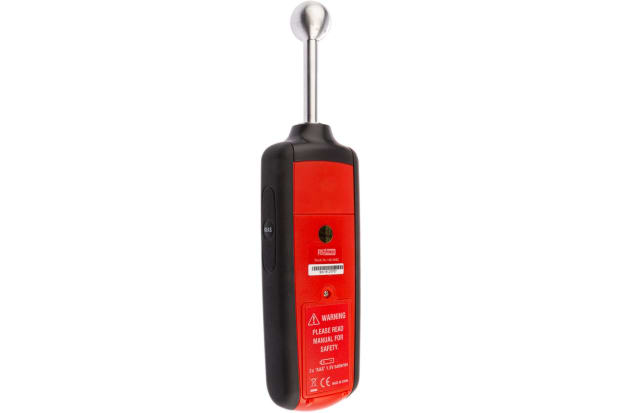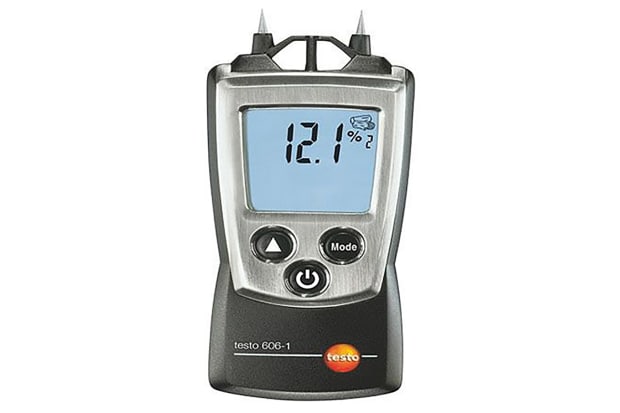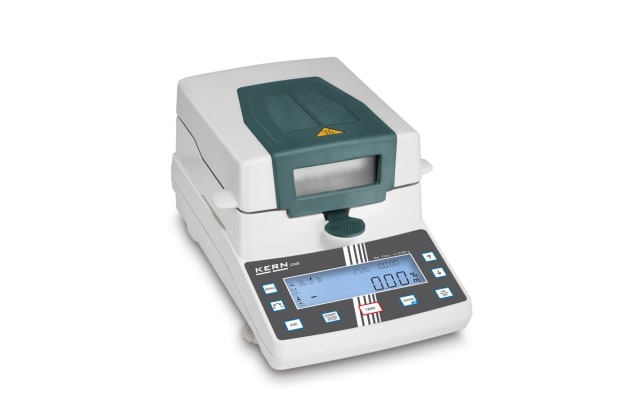- Published 10 Feb 2023
- Last Modified 29 Aug 2023
- 9 min
A Complete Guide to Moisture Meters
From identifying the different types of moisture meters to understanding how they work, our guide is here to help.

What is a Moisture Meter?
Moisture meters (otherwise known as moisture detectors) are used to measure the amount of water within a material sample. This measurement allows the user to find out whether the moisture levels are appropriate, or if adjustments need to be made.
In particular, property inspectors may be keen to identify the levels of moisture due to the risk of damage associated with damp. Alternative use may be made by furniture builders keen to ensure the best possible quality.
Moisture meters typically feature digital screens that allow quick readings to be taken. The reading may indicate whether there is some disparity in the moisture level in relation to a pre-defined limit.
Moisture meters may be used to assess materials including:
- Wood
- Concrete
- Drywall
- Paper
Excess moisture may result in the degradation of the material, so it is important to take meter readings. Moisture meters are essential tools for professionals who deal with property maintenance, wood fuel, and stove installation, to name just a few common applications.
There are two main types of moisture meter - pin and pinless. These types of testing equipment are each suitable for specific purposes and are unique to the user’s requirements in measuring the level of moisture content.
Types of Moisture Meter
There are two main types of moisture meter - pin and pinless. These types of testing equipment are each suitable for specific purposes and are unique to the user’s requirements in measuring the level of moisture content.

Pin-Type Moisture Meter
Portable pin-type moisture meters feature 2-4 small steel probes, which are inserted into the material to effectively gauge the moisture level. The material probing process is followed by the circulation of current between two points, with the level of resistance translating into a moisture content value. The pin-type moisture meter allows for a greater range of depth readings than the pinless variety. These meters are typically used to determine the level of moisture in materials such as plaster, plasterboard, concrete, and wood.
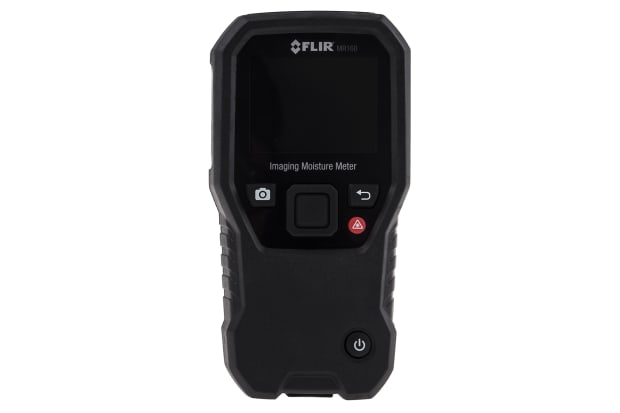
Pinless Moisture Meter
The pinless moisture meter (or non-damaging meter) features a sensor pad. This pad transmits an electromagnetic signal, allowing for assessment of the moisture level on contact with the material. These moisture meters assess the fluctuations in wave movement data to establish the level of moisture present. The measurement process does not require the penetration or breakage of the material. There are different pinless models that allow for the reading of moisture levels up to a depth of 0.75-1.5”.
What are Moisture Meters Used for?
As previously mentioned, moisture meters measure the level of electrical resistance between two set points. However, pin-type moisture meters only measure the moisture content (MC) of the set point between the two pins. Repeat readings are required to establish the MC when using a pin-type meter. Conversely, pinless moisture meters transmit an electromagnetic signal that allows for the assessment of a greater material area.
Moisture Meters for Wood
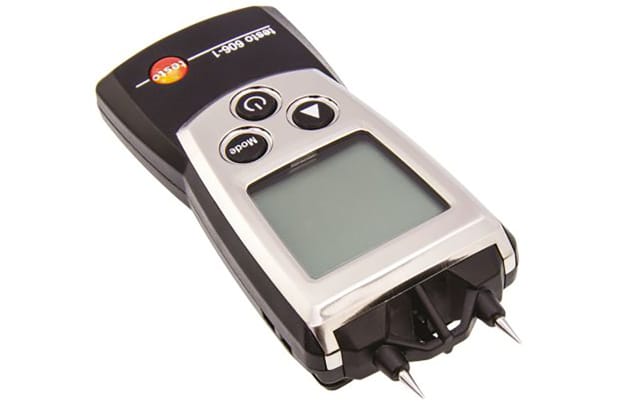
Moisture meters can be used to make a highly accurate estimation as to the moisture content of wood. However, there will be some variation depending on the quality and brand of moisture meter being used. The level of accuracy can be identified through the use of the oven-dry test, involving the weighing of wood before and after a round of oven drying. A good quality moisture meter will give repeatedly accurate readings. It can be used for a variety of environmental measurement applications, assessing the moisture content of items including wooden furniture and timber frames.
Moisture Meters for Caravans
The level of interior damp is a common concern for caravan owners. This is because the sealant used in caravan construction is known to deteriorate over time, allowing moisture in. However, a variety of damp meters can be used to monitor moisture levels and identify the percentage of moisture content in different areas of the caravan.
You should be aware that a moisture reading of 0-15% is quite normal and gives no cause for concern. However, moisture readings in excess of 15% indicate the need for further inspection. Levels between 25-30% indicate that there may be water ingress, meaning that remedial work could be required. It’s also worth bearing in mind that environmental conditions will have an impact on the moisture readings, with higher levels of moisture expected on wet days.
Moisture Meters for Soil
Portable soil moisture meters are purpose-made to identify levels of moisture within soil, compost, and vegetation. Such meters are commonly used by gardeners, farmers, and conservation experts to ensure that environmental conditions are ideal for growing plants, flowers and crops. It is advisable to take readings in a few different areas around the vegetation to ensure accuracy across the board. You can also use this sort of meter to assess the type of soil (whether moist or freely draining) and calibrate irrigation systems.
Moisture Meters for Plants
It is essential to ensure that indoor and outdoor plants have enough water. Plant moisture meters can be used to monitor the dampness of soil, letting you know if you need to add water. Moisture meters that indicate whether the soil is wet, moist, or dry at the root level are considered the best option for large potted plants. There is a variety of easily affordable moisture meters available that can be used to gauge the moisture level of houseplants. However, it would be worth investing in a robust meter featuring a long stem to measure moisture levels in clay and hard soil.
Moisture Meters for Walls
A range of moisture meters can be used to accurately assess levels of moisture within different types of walls. These portable devices indicate whether there is any evidence of rising or penetrating damp within foundation walls, floors and timbers. They can also be used to assess the dryness of surfaces before papering and tiling work takes place.

Moisture Meters for Concrete
Concrete moisture meters are ideal for measuring moisture levels in a variety of building and construction materials. In particular, they can be used to measure the moisture levels of concrete floor coverings, slabs, beams, and other building materials. Many of these meters are impact-resistant and allow for automatic temperature compensation. Spot checks can also be carried out in relation to particular points of a concrete slab.
How Does a Moisture Meter Work?
Moisture meters can be used to assess moisture levels within a wide variety of materials. Some moisture meters provide analogue readings, while others provide digital.
Moisture meters commonly feature colour indicators that light up in accordance with the detection of different moisture levels. The green light indicates dryness, the yellow represents moderate moisture, and the red denotes high moisture levels.
As previously mentioned, moisture meters are available with and without pins. The pin-type moisture meter operates on a resistance principle and allows for the basic measurement of electricity circulating through a substance. This type of meter can be used to effectively distinguish surface and ambient material conditions. However, the use of a pin-type moisture meter may result in material damage.
The pinless or non-invasive moisture meter operates on the principle of electrical impedance. It allows for accurate readings to be taken without causing any damage to the material.
How to Use a Moisture Meter
For accuracy, you should calibrate the moisture meter prior to taking any readings. The exact process of calibration will vary, depending on the type of meter that is being used. However, the majority of pinless meters can be calibrated with a purpose-made calibration block or kit.
Once the device is calibrated, how to use a moisture meter efficiently and effectively will depend on the specific type of meter you are using.
The process of using a pin-type moisture meter is as follows:
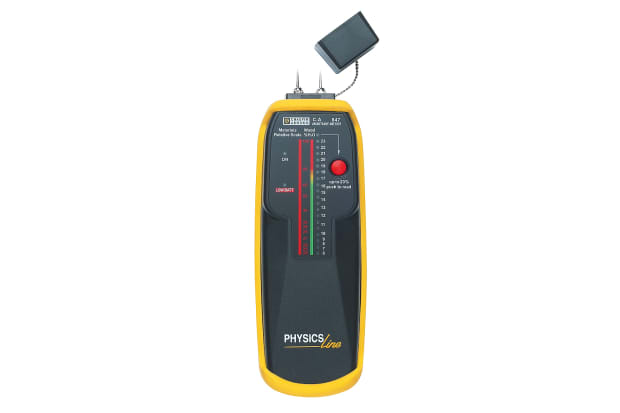
Step One: Set the Moisture Meter
Prepare for the task by choosing the moisture meter setting specific to the type of material you will be measuring.
Step Two: Position the Moisture Meter
Position the moisture meter so that the pins are perpendicular to the substrate surface and push them straight into the material as far as possible.
Step Three: Take the Reading
Take a record of the reading, indicating whether the measurement is a percentage or reference.
Step Four: Repeat the Process
Take readings in different areas of the material, ideally focusing on high-risk areas such as the outside of windows during wall assessments.
A pinless moisture meter should be used as follows:

Step One: Prepare the Surface
Wipe away any residue or standing water from the surface.
Step Two: Apply the Meter
Press the meter against the surface and wait for the reading to stabilise.
Step Three: Take a Record
Take a record of the moisture content and percentage value reading.
Step Four: Repeat the Process
The position of the meter can be changed in order to obtain further readings and develop a clear picture of the overall moisture content.
Moisture Meter Brands
There is a wide range of available brands and manufacturers offering high-quality moisture meters. This variety includes both pinless and pin-type moisture meters which are suitable for applications including woodworking and property inspection.
FLIR
Browse a wide range of moisture meters from leading brand FLIR, including a variety of options to suit various applications.
Kern
Moisture analysers are ideal for observation and analysis. Browse the range from Kern online with RS Components.
Protimeter
Protimeter moisture meters are ideal for a range of applications. View our full range and discover the product best suited to your needs.
RS PRO
RS Pro is our own in-house range, offering an extensive selection of moisture meters to suit your requirements.
FAQs
Are Moisture Meters Accurate?
Factors such as the type of material being assessed, the corresponding moisture meter scale, and the level of maintenance all have a bearing on the accuracy of the moisture meter. A high-quality meter can provide readings with an accuracy of up to 0.1% in relation to the material’s moisture content. As previously mentioned, you should calibrate the meter before use to ensure that it is as accurate as possible.
What is an Acceptable Moisture Reading?
The acceptability of the moisture reading depends on the type of material being assessed. For instance, different levels of moisture will be deemed acceptable in wood, depending on the intended use and the environment surrounding the area set for installation. Oven drying and other methods may be used to establish levels of accuracy.
What is the Best Moisture Meter for Firewood?
The pinned variety is recommended for checking wood that you are simply going to burn. Your chosen moisture meter should offer a good level of accuracy in checking the moisture content range - maximum moisture content of 20% is usually recommended for firewood.
What is a Normal Moisture Level in Walls?
The normal or safe level depends on what the wall is made from. As an example, drywall will ideally have a moisture content of under 1%. However, it is worth keeping in mind that the levels of ambient humidity and surrounding temperature will also have some bearing on the amount of moisture that is present.
Can a Moisture Meter Detect Mould?
A moisture meter can’t directly detect the presence of mould. However, you can use the meter for a general inspection, identifying areas where there is an increased risk of mould. In cases where you do suspect the presence of mould, it’s wise to consult an expert for further guidance. In terms of the best meter to use for the task, moisture analysers are typically preferred for mould detection.
Popular Products
For Use in Buildings
Ideal for detecting moisture levels in building materials, our range includes moisture meters from leading brands such as FLIR and RS Pro.
For Use with Plaster
See our range of moisture meters for use with plaster and select the moisture meter best suited to your specific requirements.
Moisture Analysers
RS Components also offers a range of moisture analysers, ideal for more in-depth analysis and detailed reporting.
Related Accessories
RS Components offer a wide range of moisture meter accessories including replacement pins, probes, leads, protective cases, and much more.
